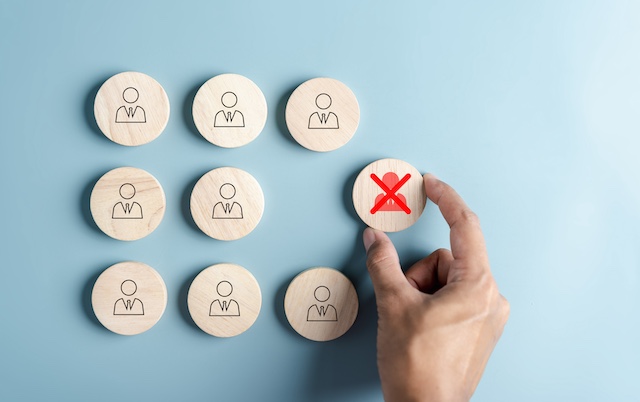Redundancy in the workplace refers to roles, responsibilities, or positions within a company that are no longer vital to operations. This occurs when certain jobs are no longer adding value or teams are restructured in a way that makes specific roles obsolete or duplicative. For example, implementing new software or automation technology can sometimes eliminate the need for certain manual or administrative roles. Mergers and acquisitions also can create redundancies when teams with similar roles are combined under one company.
Similarly, consolidating previously siloed teams with overlapping functions can reveal where staffing is now bloated. Whatever the cause, redundancy creeps in when the number of employees or roles exceeds what is truly required for the organization to function productively.
Addressing redundancy involves making objective, strategic decisions around eliminating non-essential positions to reduce bloat and increase cost-efficiency and organizational leanness. As a business leader or HR professional, recognizing true redundancy allows you to optimize staffing models for productivity and profitability.
Resilience can be built. Download our guide for tips on how to strengthen your workforce.
How Do You Identify Redundant Roles at Your Company?
Identifying redundant roles in a company is a delicate task, requiring careful consideration to avoid negative impacts on morale and ensure legal compliance. Here are several methods to approach this challenge:
1. Analyze workflows and tasks
Map out workflows across departments, identifying overlapping responsibilities and tasks performed by multiple individuals. Look for areas where automation or streamlining can eliminate duplication of effort. Tools like process mapping software can aid in visualizing and analyzing workflows.
2. Review job descriptions and skills
Compare job descriptions for similar roles, seeking significant overlaps in duties, skills, and qualifications. Identify roles with minimal differentiation in responsibilities. Consider conducting employee skills assessments to evaluate employee skill sets and identify potential overlaps objectively.
3. Utilize data and metrics
Leverage performance data, project reports, and utilization metrics to assess individual and team contributions. Identify roles with consistently low productivity, output, or utilization compared to peers. Remember, data shouldn’t be the sole deciding factor, as context and individual circumstances matter.
4. Conduct internal surveys and interviews
Encourage open communication by gathering employee feedback through anonymous surveys or confidential interviews. Ask about workload distribution, task clarity, and potential overlaps in responsibilities. This can reveal inefficiencies and hidden redundancies employees face daily.
5. Benchmark against industry standards
Compare your company’s staffing structure and roles to industry benchmarks and best practices. This can expose areas where your organization might be overstaffed for the tasks performed compared to industry norms.
6. Seek external expertise
Consider engaging consultants or HR professionals with experience identifying and addressing redundancies. They can offer objective assessments and best practices tailored to your specific industry and company context.
Important considerations:
- Transparency and communication: Throughout the process, maintain transparency with employees, explaining the rationale behind identifying redundancies and potential outcomes. Open communication fosters trust and minimizes anxiety.
- Focus on skills and performance, not individuals: Redundancy is about identifying unnecessary roles, not evaluating individuals’ performance. Avoid targeting specific employees and focus on the objective assessment of roles and their value to the company.
- Legal compliance: Ensure the process adheres to all relevant labor laws and regulations to avoid discrimination or unfair dismissal practices. Consult with legal counsel if necessary.

5 Tips to Deal with Redundancy in the Workplace
Dealing with redundancy in the workplace is a challenging responsibility that HR professionals and executives must navigate with sensitivity and strategic insight. Here are five tips for effectively managing redundancy situations:
1. Fair and inclusive selection process
The process of selecting employees for redundancy should be fair, transparent, and free from bias. HR professionals and executives must establish clear criteria for selection, considering factors such as performance, soft skills, and contributions to the organization. Inclusive decision-making processes, where feedback and input are sought from various stakeholders, can help ensure that decisions are well-rounded and minimize the risk of unintended consequences.
2. Transparent communication
Open and transparent communication is paramount when dealing with redundancy. HR and executives should provide the affected employees with clear, honest, and timely information. Communicate the reasons behind the decision to eliminate their positions, the criteria used for selection, and the anticipated impact on the organization. Transparency helps build trust among employees and mitigates uncertainty during a challenging time.
3. Skills development and training opportunities
In cases where certain roles become redundant due to technological advancements or shifts in organizational needs, offering skills development and training opportunities can be a proactive strategy so that employees can be redeployed to other roles within the company. HR can collaborate with affected employees to identify areas for upskilling or reskilling, aligning their capabilities with internal emerging demands. These processes also enhance the overall agility and adaptability of the workforce.
4. Employee well-being initiatives
Redundancy can take a toll on the mental and emotional well-being of employees. Implementing employee well-being initiatives is crucial during such transitions. HR can provide access to counseling services, organize workshops on managing stress and change, and foster a supportive work environment. Additionally, creating avenues for open dialogue and feedback allows employees to express their concerns and fosters a sense of community during challenging times.
5. Supportive outplacement services
Offering comprehensive outplacement services is a compassionate approach to assisting employees affected by redundancy. Providing career counseling, resume writing support, and job search assistance can significantly ease the transition for those facing job loss. Outplacement services demonstrate a commitment to the well-being of departing employees and enhance the company’s reputation as a socially responsible employer.
Review the 9 steps to conducting a successful layoff.
Be Prepared to Handle Redundancies At Your Company
While redundancy is never ideal, understanding its causes, identification methods, and best practices can help you navigate this challenging process more sensitively and effectively. Remember, open communication, fair treatment, and support for affected employees are critical aspects of managing redundancy responsibly. Being prepared to handle redundancies involves focusing on cost-cutting, nurturing your workforce’s resilience, and ensuring your organization’s long-term success in an ever-evolving business landscape. By taking a proactive and empathetic approach, you can minimize the negative impact and even turn this challenging situation into an opportunity for positive change within your organization.
If you’re looking to create a more resilient organization, INTOO has solutions to help. Our career development programming helps businesses increase the skill diversity of their workforce, while our outplacement services help those impacted by redundancy find new meaningful employment. Contact us today to learn more.











